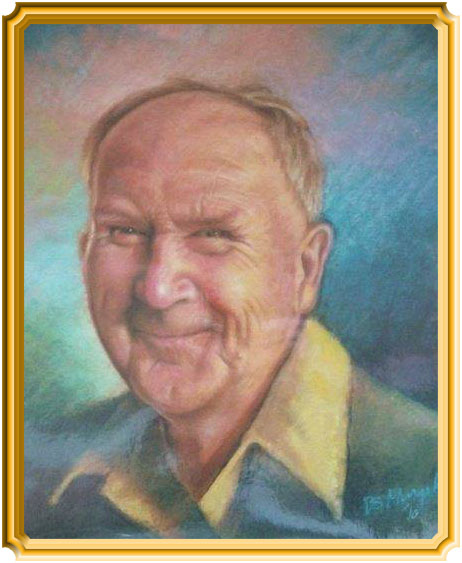The Secret, Free, Unconventional Disciple-Saint
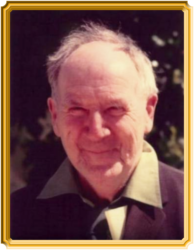
“I feel that he was a realized Master
before the end of his life.
He was a great being, and certainly
one of the most unrecognized ones…
Now is the time
for him to be really recognized
in this world.
He has been one of the best kept secrets.
Dr. Lewis used to call him ‘Saint George.’”
(Bob Raymer, SRF minister,
ordained by Yogananda)
The nonconformist disciple
Among Yogananda’s highly advanced disciples, there is one who stands out: George Edward Gaye (1902-1978), known as Dr. George.
Each single disciple of Yogananda, it seems, has a specific role to play, offering an important message to us. If there is a message from Dr. George, it is this: “Do not care what people think of you. Don’t strive to be recognized or important. Give up the outer symbols of spirituality, those wise beards, draped shawls, names, titles, roles, “saintly” smiles, or accepted behaviour in order to fit into the group. Be fully and unashamedly yourself, however odd that might turn out to be. All that counts is your inner state.”
Dr. George in fact was the most unorthodox, out-of-the-box, and nonconformist character of all direct disciples. He was truly one of a kind, completely indifferent to society’s norms of behaviour in dress, appearance, and living, showing that authentic spirituality has nothing to do with any outward standard.
His spiritual stature was exceedingly high, which is why Yogananda called him, in writing, “a master”. This is no little compliment as we shall see. In fact, Dr. George levitated, healed the hopelessly sick, appeared in distant locations, and performed amazing miracles of all kinds.
Yogananda advised Bob Raymer to seek, for his spiritual benefit, the company of: Rajarshi Janakananda, Mr. Black, Dr. Lewis, and Dr. George.
In other words, Dr. George was on the spiritual level of the most elevated disciples. The more one reads and hears about him, the more one realizes that he was, indeed, a spiritual colossus.
The secret saint
He could easily have become famous had he chosen to display his inner powers publically. Yet he remained the most secret, hidden, unknown and unrecognized of all the advanced disciples. Still today, a mysterious veil seems to be wrapped around his life, keeping him in silent obscurity. In fact, it was Yogananda’s wish for him to remain behind the scenes.
Yogananda told him specifically: “George, you must never let them know who you are.” And he certainly didn’t.
The question is: why did the Master ask him to remain hidden? The reason may be karmic: it was necessary for his growth and freedom to be without a big following. Or it may be purely practical: Dr. George was simply too unconventional to be of help to Yogananda’s mission, which required a certain outer decorum in order to reach the masses.
Today, however, due to his students’ efforts, two revealing books have been written about him. His exalted presence is gradually beginning to emerge. A special “thank you” goes to Richard Bowen, who is the editor of both publications.
Nevertheless, Dr. George remains for the most part an elusive and unknown character. Even on the internet, the various ancestry-sites maintain a jealous secrecy about him. Hardly any information can be found about his life, his forefathers, or his close family. The sites do not include even a single photo of him, which is rare. There is no reference to anything, no obituary, not even a picture of a gravestone. Who were his ancestors, parents, siblings, and where did he live? Where is he buried? Nobody knows, or at least publishes such knowledge.
Even after his death, Dr. George remains a secret saint, an elusive appearance on our planet. Google search offers but two rare pictures of this extraordinary and shining soul.
Let’s look at some of the very few facts known about him. The information in this article comes from the following sources: Sam Podany’s book, “Masters and Miracles”; the book “The Secret Saint” which contains memories of persons who knew him; from his students who generously shared stories in informal talks; from reminiscences of Bob Raymer, who was his friend; and also from a few public records.
Who was he?
“Dr George was a very quiet and humble man,” a student recounts. Most of all, great as he was, “he didn’t care at all for fame, money, recognition, or power.”
In his quietness, however, he was completely himself: unique, unusual, even eccentric.
It is said that: “Clothes make the man.” Isn’t there some truth in this? When we meet a person for the first time, our impression is easily influenced by his/her outer appearance. However, those who met Dr. George on that superficial level were completely fooled, unable to discover his blessed, blissful, God-united greatness.
Usually he was dressed in shabby clothes, wearing his socks inside out, often socks of different colors. Or he pinned his coat together with a large pin, or wore a funny coonskin-hat, and other similar things.
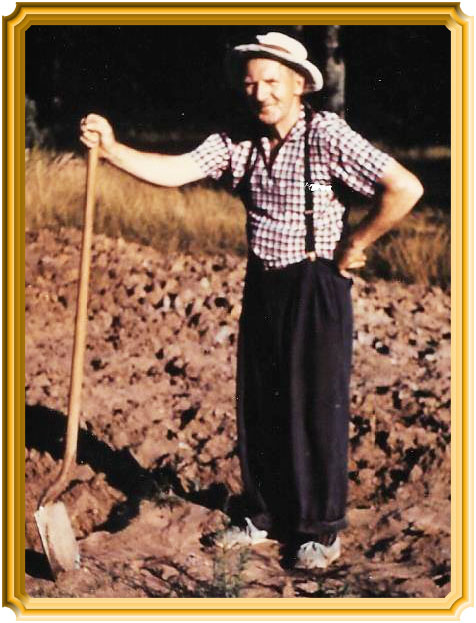
He washed his clothes in a sink and dried them by hanging them on a chair, and that was all the care his wardrobe received. He was simply “a funny looking guy,” as Bob Raymer recounts. In short, Dr. George didn’t care in the slightest about how he appeared to the public eye.
A student describes him as follows: “He dressed like a street person in old patched clothes. He purposely screwed up his haircut so he looked like a bum.”
Did he, then, purposely and consciously challenge people – and society in general – to be less superficial, to always look behind outer appearances? Was that part of his divine mission; a lesson meant for you and me?
Dr. George, so his students say, had enormous will power; to call it “an iron will” would still be an understatement. Had he felt the guidance, he could, in the blink of an eye, have “shaped up”, dressed differently, lived differently. But that wasn’t his role. His role was to challenge superficiality and to emphasize the inner man.
Outwardly, his wrinkled face is remindful of a gnome in the forest. A public record says he had a scar over his right cheek, which might have added to his unusual appearance.
Bob Raymer, who held Dr. George in the highest esteem, tells us that he also had “a funny sounding voice,” and that “he couldn’t talk very well,” as he meditated a great deal, staying often in silence. “He chopped off sentences and was hard to understand.”
In addition, he lived in a self-built “ramshackle house,” as Bob Raymer recounts. “Everything was in shambles, breadcrumbs were all over the counter, everything was wrecked, it was a real mess.” Imagine the scene. (During his last seven years, two women lived with him, taking care of him, and the situation must have improved).
But all that was, of course, only the outer shell of a special, powerful, and God-filled saint, who attracted non-superficial and intuitive seekers with his irresistible magnetism: a magnetism of holiness, purity, power, and divine love.
A Master
In fact, Yogananda wrote him a letter in 1938, which contained these significant words: “George, you are a Master of yoga and should be addressed with respect.” He suggested a title such as “Master” or “Doctor”. George chose “Doctor”. That is why even today he is known as “Dr. George”, even though he was not a physician.
The fact remains, however, that Yogananda specifically described him as “a Master”, which is an extremely high designation. Why?
In his Autobiography of a Yogi, he explains what that term really means:
“Numerous bewildered seekers in the West erroneously think that an eloquent speaker or writer on metaphysics must be a master. The rishis, however, have pointed out that the acid test of a master is a man’s ability to enter at will the breathless state, and to maintain the unbroken samadhi of nirbikalpa. Only by these achievements can a human being prove that he has “mastered” maya or the dualistic Cosmic Delusion.”
Once a disciple directly asked Yogananda that question: “When may someone be called a master?” “One is a master,” the Master replied, “when he has attained Christ Consciousness.” (see The Essence of Self-Realization”)
In that case, what is Christ Consciousness? How is it experienced? Yogananda answers as follows:
“By still deeper meditation, one perceives in the physical body, underlying the AUM vibration, the vibrationless calm of the Christ Consciousness, the reflection in creation of the unmoving Spirit beyond creation. In ancient spiritual tradition, the Christ Consciousness is spoken of as the Son. For just as, among human beings, the son is a reflection of the father, so in cosmic consciousness the Christ – in Sanskrit called Krishna, or Kuthastha Chaitanya – reflects in all things the consciousness of God, the Father, beyond creation. By ever deeper meditation, one expands his awareness of the Christ Consciousness beyond the limits of the body to perceive his oneness finally with the Christ Consciousness, which underlies the manifested universe.” (The Essence of Self-Realization”)
Only at that point of inner evolution does Yogananda call a yogi “a master”; not before. The important point is this: Dr. George had achieved that most exalted state.
A life full of yogic miracles
The miracles which happened around him are too many and told by too many people, to be written off as mere fantasy or as pious embellishments. Dr. George, however, never made a big thing about them, or talked about them, or demonstrated them. His silent, hidden way is remindful of these words from the Autobiography of a Yogi:
“Others talked of miracles but could manifest nothing; Sri Yukteswar seldom mentioned the subtle laws but secretly operated them at will.”
Here are some special miracles performed by Dr. George:
- The condemned house
The ramshackle house he built on his property, adding to it one room after the other, violated every existing building code. It was 50 blocks away from the city center and was condemned in 1934. The city of Milwaukee tried and tried to evict him and to tear it down for over four decades, but inexplicably never succeeded. It remained untouched. For some devotees this was the greatest miracle of all, given the unassailable power the building inspectors yield in such matters.
- Driving with eyes closed
Various devotees recount that Dr. George at times drove his car, even for hundreds of miles, with his eyes closed, as if he were asleep. He was looking through his third eye, driving safely, without ever causing an accident.
- Asian cockroaches
Dr. George added room after room in his “ramshackle, multi-storied” house at 5000 South 20th Street, Milwaukee. During the depression years he allowed 19 poor families to stay there. Even afterwards, he sheltered families. One such family turned out to be bossy and bad-tempered, starting to take advantage of Dr. George’s generosity. They told him that they’d stay as long as they wanted to and that they’d bring their friends and relatives, just as they pleased. Dr. George smiled and answered: “You’ll be gone by morning.”
That night, thousands of cockroaches came out of the walls, flooding the whole room. The nasty family hurriedly ran away, never to return. In the morning, all cockroaches were dead. A student who knew about insects observed that these were an unusual kind and brought one to the university. In fact, it turned out that this “was a rare Asian cockroach, never seen in the United States.”
- Healing the sick
Dr. George performed many miraculous healings. Some students recount of times when they were going through an intense sickness, and just by being in his presence they experienced an instant and complete healing.
At times his intervention was truly dramatic: a hole in the skull of a child who had fallen down the stairs disappeared immediately at his intervention.
He saved people from dying: once a student fell from a scaffolding, nine feet high, (almost three meters), crashing down with his head on concrete. He seemed lifeless. A local Sheriff rushed him to the hospital. The doctor gave him no chance of survival, as his brain was irrevocably damaged. Dr. George appeared on the scene, telling the doctor: “Patch him up as good as you can, I will do the rest.” The parents soon arrived. They were told that their son would die, or at best be “a vegetable”. Dr. George however assured them that he would be fine. Indeed, after a coma of 30 days, their son emerged fully recovered. The doctor and the staff of the hospital were dumfounded and described it as a complete miracle. Medically speaking, there hadn’t been the slightest chance of recovery.
- Appearing afar
A student’s sister was deaf and therefore attended a special school, away from the parents. She told her family: “Whenever I am lonely at the Allen School, a very kind man comes and talks with me at night. I feel so much better after he talks with me.” After many years, when that woman had graduated, she accompanied her brother to meet Dr. George. Upon seeing him, she exclaimed: “That’s the man who spoke with me at Allen School.” She too became his student.
- Knowledge of people’s thoughts
Dr. George knew every thought of people. He answered them. He also knew people’s past. It was, his students say, as if one stood naked before him. Nobody could hide.
- Walking on water
Dr. George himself told the story that at Encinitas, Yogananda had chanted with him for a long time. They were floating upwards toward Spirit. At one point the Master asked him to come down with him to the beach. There Yogananda started to walk on the water. The Master told him to follow him, to walk on water as well. Dr. George always ended this story by saying, “I didn’t go, as I was scared.” A student asked him if that scare was really what happened, as Dr. George was known to be an altogether fearless person. Or did he use that explanation only to hide his stature, as Yogananda had advised him to do? Dr. George at that point confirmed: yes, he too had walked on the water. (And even if he hadn’t, just the fact that Yogananda asked him to walk on water says enough about who Dr. George was.)
- Levitation
His students saw him levitate. Once they were standing on the roof of a house and Dr. George appeared at their side, where there was no house to stand on. He was floating in the air. He told them: “I better get back on the roof. Everyone will do too much talking otherwise.”
- A mystical fence for children
Some of Dr. George’s miracles were mightily strange. There was a school next to his property. Children always came over to play when nobody was around and he was afraid that they might get hurt, with all the building materials lying around. He had his own solution: in the presence of a devotee, he found an old torn baseball cap and nailed it to a tree, saying: “That will do it.” Not a single child, after that, entered the property ever again.
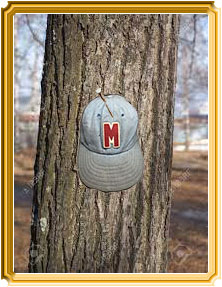
What had happened? The baseball cap was simply an outer object, available at the moment. It had no importance in itself, but could have been replaced by any other. It is remindful of the miraculous resurrection of Rama by Lahiri Mahasaya, told in the Autobiography of a Yogi. Lahiri Mahasaya had used seven drops of castor oil, which also had no importance in itself. Sri Yukteswar, who tells the story, explains: “Giving the oil had no meaning except that I expected something material and Lahiri Mahasaya chose the near-by oil as an objective symbol for awakening my greater faith.”
What really happened in Dr. George’s miracles was that he applied subtle, generally unknown, laws of nature, of vibration, of life-force, of consciousness. He did so only according to the Divine will, as Yogananda explains in his Autobiography of a Yogi:
“A man of realization does not perform any miracle until he receives an inward sanction.”
In addition, he never felt himself to be the performer of the miracle, but as a pure instrument of the Divine (again from the Autobiography of a Yogi):
“It was evident in all miracles performed by Lahiri Mahasaya that he never allowed the ego-principle to consider itself a causative force. By perfection of resistless surrender, the master enabled the Prime Healing Power to flow freely through him.”
The “metaphysical garbage man”
On a human level, Dr. George was, to all accounts, filled with an immense and constant love, for everyone. As one student describes it: “We were all overcome, enveloped by an all-encompassing love. You just wanted to be in his presence. He had this love that reached out and held you in.”
With his odd outer character and behaviour, he seems to have attracted strong-willed and stubborn people. They were all deeply blessed.
Dr. George said about himself: “I am a metaphysical garbage man”. What did he mean by this colorful expression? He explained it in this way: “My big job is holding people’s hands as they work out their bad past karma.” This was a metaphor, of course. More clearly put, it means that his main work on Earth was to assist his students by taking on himself their “garbage” (tough karma).
They loved him deeply: “There was a power, and a love, and a vibration around him – you could cut it with a knife. It was thick, it was beautiful.”
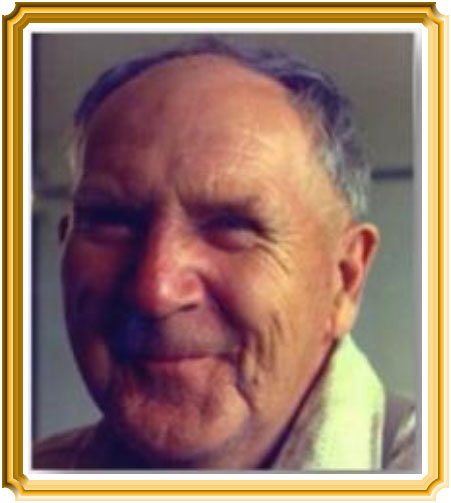
Being around him wasn’t easy, however. As we mentioned before: “He knew you like a book. You were naked before him. He knew all your thoughts. He knew all your experiences. You were totally open.” Not only was he aware, but the students themselves became painfully aware in his presence of all their inner shortcomings, psychological kinks and personal deficiencies.
In addition, he pushed his students and constantly challenged them to their limits. For example, he had people who couldn’t get along with each other work side by side. He gave them jobs that pushed them to the edge. It was definitively not relaxing. In general, students had to work hard in his presence (and so did he). Being with him was highly uplifting, inspiring, transforming, but never easy.
His powerful impact on people
Outwardly, Dr. George didn’t teach or preach much at all, just once a week, during the Sunday Service talk. Otherwise, he simply asked his students to help him with various chores, most typically with his odd house constructions, all of them made from used and gathered materials. He didn’t talk much about spirituality at all. His topics of conversation were hammers, boards, pipes, etc. What transformed people, in other words, was not what he said, but rather the magic of his presence.
Bob Raymer tells us about the heavenly and powerful impact which saintly Dr. George had on him: once they were traveling in Bob’s private little airplane to the SRF convocation in L.A. and stopped in Albuquerque, in a hotel. At 2 a.m. Bob woke up and didn’t know what was happening. He felt divinely elevated and went straight into meditation. All of a sudden he saw Dr. George walking back and forth between their two rooms. He was in a blissful state of ecstasy.
Bob Raymer concludes: “I always looked forward to being with him, because just being with him was enough to make you feel that inner realization.” He adds: “George was so very, very special. Such an incredible being.”
A biographical sketch
Let’s take a brief look at his life, at the little bits which are known: his distant past, childhood, adulthood, his life with Yogananda, and the time afterwards.
Past lives
Dr. George’s remembrance of past lives was acute – not only of his own, but of others’ as well. He told students who and what they had been in earlier lifetimes and who famous public persons had been. Martin Luther, for example, had been a yogi in the Himalayas, training for a long time to prepare for his important mission in this life. So had Abraham Lincoln.
He recounted that he had spent a number of lifetimes in China. Of course, he lived in India as a yogi, many times, for example during the invasion of Alexander the Great.
Birth and parents
In the Autobiography of a Yogi we read:
“Many yogis are known to have retained their self-consciousness without interruption by the dramatic transition to and from ‘life’ and ‘death.’”
Yogananda refers, of course, to highly developed yogis. Dr. George was one of them. He stated: “I knew who I was, even while I was being born.” Needless to say, such awareness requires a highly advanced inner state.
He also remembered when he was in his mother’s womb, that he was “kicking like heck” because he didn’t want to come back to earthly life.
Dr. George was born in Chicago, on a Thursday (Guru day), Nov. 27, 1902. A saint had reincarnated, karmically linked to Yogananda, who at that moment in far-off India, was nine years old.
According to a public document (census 1905), his mother was called May Gaye, a servant by occupation. That same document indicates that Dr. George had a brother, Oron W. Gaye, one year older than him.
His mother apparently died not long after childbirth. He never knew his father, who remarried and died soon thereafter. In short: Dr. George grew up as an orphan.
During his first years, his older half-sister took care of him.
At the age of two, he had a vision of the work he was going to do on Earth. He stated that even in childhood he was connected to the great Masters.
From the age of five to nine he lived on a farm with a tough and unloving farmer. Little Dr. George got only oatmeal to eat, for breakfast, lunch, and dinner. Before and after school he had to work hard.
At the age of nine, his situation improved. Another farmer took him in and treated him more lovingly.
Through all of that, he went to grade school and high school.
Aged sixteen, toward the end of America’s involvement in WWI (at the end of 1918), he enlisted in the army for a few months.
After that, he obtained a teacher certificate and taught in a school.
Later, at some point, he studied for two years in college.
Meeting Yogananda
Yogananda arrived in the USA in 1920. For three years, he stayed with Dr. Lewis in Boston. Then he started his maiden nation-wide “campaign”. He writes in his Autobiography of a Yogi:
“Starting a transcontinental tour in the summer of 1924, I spoke before thousands in many of the principal cities, ending my western trip with a vacation in the beautiful Alaskan north.”
This was his itinerary:
– On November 24, 1923, he conducted his first public lecture in New York City and
began a four-month series of classes there.
– On May 1, 1924, he started a one month long series of classes in Philadelphia.
– On July 11, he departed from New York.
– On August 11, he began lectures in Denver and then in near-by Colorado Springs.
– On September 9, he travelled by steamer from Seattle to Alaska for a vacation, staying in various ports, one of which was Anchorage.
– On October 7, he began a two-week series of lectures in Seattle, where he met Sister Gyanamata.
– On October 21, he began ten days of lectures and classes in Portland.
– In late October, he visited the San Francisco Bay Area, lecturing in San Francisco (University of California, Berkley, Scottish Rite Auditorium; and Scottish Rite Hall) as well as in Oakland. In San Francisco, he met Tara Mata. On November 22, he met Luther Burbank in Santa Rosa.
– In January 1925, he arrived at Los Angeles and soon established his international headquarters atop Mount Washington.
There is, however, one destination (probably more) which is omitted from this official itinerary: in 1924, Yogananda gave classes at the Schroeder Hotel (now Hilton) in downtown Milwaukee. This is when he met Dr. George. That sacred moment must have taken place when he travelled from New York to Denver (the trip, in fact, took one month, from July 11 to August 11, so he must have stopped somewhere): Chicago is on the way and Milwaukee is not far from there.
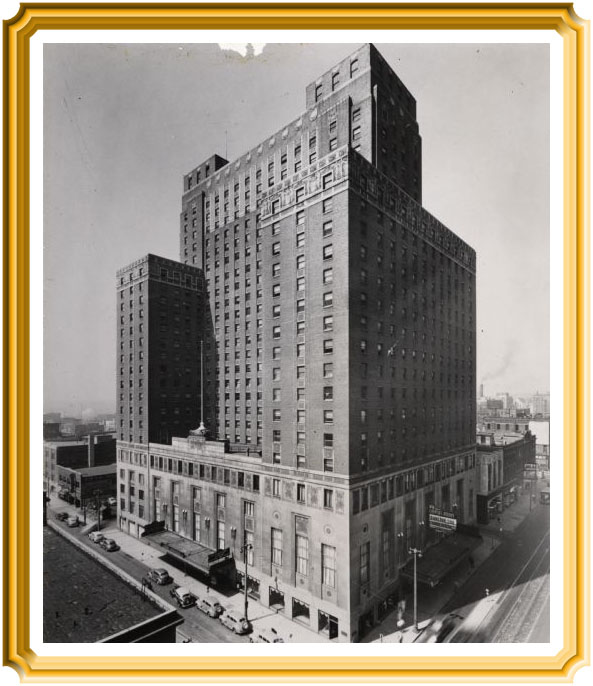
Dr. George related to friends the story of how he first met his Master. He was 22. Here is the gist of it, as told by Bob Raymer:
He was walking down the street in Milwaukee and saw this strange man [Yogananda] coming toward him: he had a turban on his head and carried a cane. Dr. George and the Master were staring at each other. Dr. George’s eyes were glued on him. When he had passed him, Dr. George turned around to look again at him. Yogananda pointed his cane at him, saying “you come to the meeting tonight.” Dr. George had no idea what he was talking about.
He kept on walking and a few minutes later he saw an advertisement, which stated that Swami Yogananda was giving a lecture that evening at a certain place. Dr. George went there. A large crowd was attending. Dr. George sat all the way in the back. Yogananda began to chant and delivered his lecture. At the end of it, he told the audience: “Out of this whole group of people here, there may be one or two that will achieve Self-realization.” Dr. George prayed that he would be one of those two. Indeed, he was!
At that time, he received Kriya intiation from Yogananda, which he continued to practice for his entire life. He remained a faithful and devoted disciple up to his last day.
After their meeting
On Dr. George’s 23rd birthday, on Nov. 27, 1925, Yogananda returned to nearby Chicago, giving conferences (on Nov. 17, he had started a one-month program there). Did Dr. George attend, celebrating his birthday in a divine way? Probably.
In the 1920s, he started a meditation center in Milwaukee, which was connected to Yogananda, but was not yet an official SRF center.
His own sadhana was intense. He meditated for five hours each night, for 12 years.
Each 12 years, so Yogananda teaches, a major inner progression occurs in the meditator. He explains in his Autobiography of a Yogi:
“The ancient rishis discovered that man’s earthly and heavenly environment, in twelve-year cycles, push him forward on his natural path.”
At any rate, at that point, after 12 years, Dr. George realized (as he told his students): “I’m doing it all wrong.” That was probably his original way of saying that he had a major breakthrough. Everything changed. It might have been that this was the moment when he went breathless, which means that he became free from body consciousness. (The breath is the chord that binds the soul to the body, as Yogananda explained). He must have felt that now it wasn’t Dr. George anymore who was doing the Kriyas; he was Spirit. He entered into samadhi, the formless state. His Kriyas became cosmic.
He probably entered the state described in a Cosmic Chant:
“Pranayam is beloved God, pranayam is Creator-Lord. Pranayam is the Cosmic World. Control the little pranayam, become all-pervading pranayam.”
This happened, as we said, after 12 years of intense practice. He had started his Kriya sadhana in 1924, when he met his Guru. So that moment of major change occurred in 1936. In fact, not long afterwards, in 1938, Yogananda declared him to be “a Master”.
Dr. George regularly visited his Guru in California. Yet, these meetings must have been somewhat hidden and silent. No stories are ever told by fellow disciples about them.
In time he became the official SRF center leader in Milwaukee and Chicago, holding that role for many years. His name in fact can be found in Yogananda’s magazine, in the 40s and 50s, in the directory of centers. Daya Mata was in contact with him, as he was an SRF center leader. But still, he always remained a secret, unknown, silent saint.
Yogananda must have authorized Dr. George to give Kriya (who else would be more eligible?), as he offered the sacred initiation at each Christmas.
In the professional world, in the 1930s, Dr. George switched occupations and became the head of the tool and die department of a manufacturer in Milwaukee.
After Yogananda’s passing
Yogananda passed away in 1952. Dr. George had been in personal contact with him for twenty-eight precious years.
After Yogananda’s mahasamadhi, Dr. George regularly visited the yearly SRF convocation (his Guru had started them in 1951). During those occasions, one wonders how many, even among Yogananda’s disciples and devotees, were able to recognize Dr. George’s inner greatness, given his rather strange and unusual personality. Bob Raymer expressed it in this way: “Dr. Lewis could really understand who he was. He was one of the few who did.”
But soon after Yogananda’s passing, his relationship with SRF changed. With Daya Mata’s presidency in 1955, SRF became more church-centered, regulated, rule-oriented, emphasizing conformity. That definitively wasn’t Dr. George’s cup of tea. In fact, he left SRF in 1957. One of his students writes: “They courted him constantly.” Obviously Daya Mata knew from Yogananda who Dr. George really was, spiritually speaking. But he never wanted to be part of the organization anymore: “He had no patience for the politics of SRF.”
Instead he created his own Church, “Self-Realization of Friendship Church of Wisconsin”, nowadays simply called “Self-Realization of Wisconsin”. It always remained (and still is, today) very small, “never more than 30 folks,” according to one of his long-time students. Many citizens, undoubtedly, were held at a distance by Dr. George’s unpolished, unrefined, and unkempt outer appearance. Milwaukee indeed was “a very conservative city.”
Unorthodoxy
Yes, he founded a Church. Yet Dr. George was as unorthodox as can be, the most un-churchy person among all of Yogananda’s disciples. When building his first place of worship in an old barn, he created the altar out of charred timber, which he had pulled out of a fire. The pictures of the Masters leaned against old rusty paint cans. Worse than that: behind the altar he placed an old used toilet: nobody knew exactly why in the world he had put it there, of all places. He often worked and spoke with symbols, his disciples recount. Was that toilet a symbolic garbage (karma) absorber?
At any rate, in that temple-barn the roof was leaking. It flooded with every rainfall. Cobwebs covered the windows. He had gathered the chairs from a junkyard. In spite of this unappealing appearance, people came, attracted like soul-bees to the divine honey.
After the services, the devotees gathered in his nearby home, which was hot in the Summer and freezing cold in the winter. On those occasions, Dr. George talked little, but people bathed in his God-permeated consciousness and were deeply uplifted and inspired.
His house, by the way, was filled with clocks of all kinds. This too, it appears, was a symbol for everyone: “Time is ticking. Don’t waste it.”
Concerning politics
One important counsel which Dr. George repeated over and over is this: “Master (Yogananda) always said that it was not wise to get involved in politics if you are on the spiritual path.” It is a counsel to ponder deeply, especially by those who sometimes get fired up by political events.
His life-message for devotees
A strong message emerging from Dr. George’s life, as we have seen, is not to give any importance to the outer “show” of spirituality, to appearances, to eloquent but intellect-based discourses, to titles, names, and organizational ranks.
In addition, another of his messages is certainly tolerance. Some devotees might be advanced, or simply sincere devotees, but on the “outer stage of life” they manifest an odd character, or are quite eccentric, being out of the norm in some way. If their eccentricity or strange originality is not a huge ego-game (“look at me, I am special, I am different”), but is simply who they are, it is to be accepted, even encouraged.
Swami Kriyananda for example was known to consciously defend strange individuals. He writes: “Toleration for eccentricity has prevented the social sanctioning of mediocrity”, and “We encourage eccentricity at Ananda…. At Ananda, perhaps infected by my own light attitude toward excessive formality, people are encouraged to be simply themselves as long as they develop inward devotion to God.”
This is the spirit with which Dr. George could have lived happily.
His passing
In May, 1978, Dr. George was admitted to the hospital in Milwaukee, as he had become very sick. One of the two woman who had stayed with him for seven years, Debbie Church, was with him for his last days at the hospital, during the daytime. He asked her to read to him Swami Kriyananda’s book, The Path. She read the entire book to him. After one of the stories, which recounts how Yogananda had taken on karma from disciples, he told her that he too was taking on the karma of his students.
His last day came. It was May 25. He was sitting up in his bed, as he had pneumonia, and having a difficult time breathing (sitting up gives some relief). He was delirious and suffering. Debbie was weeping. He suddenly took her hands, looked at her, saying firmly, “You are the Christ. You are Love. Repeat it.” So mentally she repeated this affirmation, over and over. After an hour of that inner practice she became tired and stopped. Right at that moment, he raised his delirious head and told her strongly: “I didn’t tell you to stop!” So she kept going with that holy affirmation for five hours.
The nurse finally came in, saying, “It’s time for you to leave.” By now it was evening and the room was somewhat dark. As she got up to leave, he said gently: “Debbie”. She turned around and perceived a light in the room. Dr. George was hovering above the bed and was wearing robes. He looked into her eyes, saying, “I love you.” There was a blue field of light coming out of his eyes, creating a “blue lake” between their eyes. It was an astral experience. He was shining.
The nurse then repeated, “It’s time to go.” So Debbie left.
The next morning, she received the call that Dr. George had passed. At first she thought that they simply hadn’t understood that he was in samadhi, being breathless and only apparently lifeless. In fact, he had told her that at the hospital, for hours in the early mornings, he entered into samadhi. But alas, the message was true: Dr. George had indeed left this earthly plane.
According to the US death index, he died on May 26, 1978. More probably, however, the transition occurred in the late hours of May 25. Both his entrance and exit in this world, in that case, took place on a Thursday, which is Guru-day.
At any rate, Dr. George was 75 years old. The secret saint now had blissfully passed into the heavenly and eternal realms.
May his free and holy spirit remain amongst us, teaching us to be completely authentic, soaring in God, free from too much formality, leaving all outward emphasis to the lovers of “churchianity”.
Thank you, dear and precious Dr. George.
